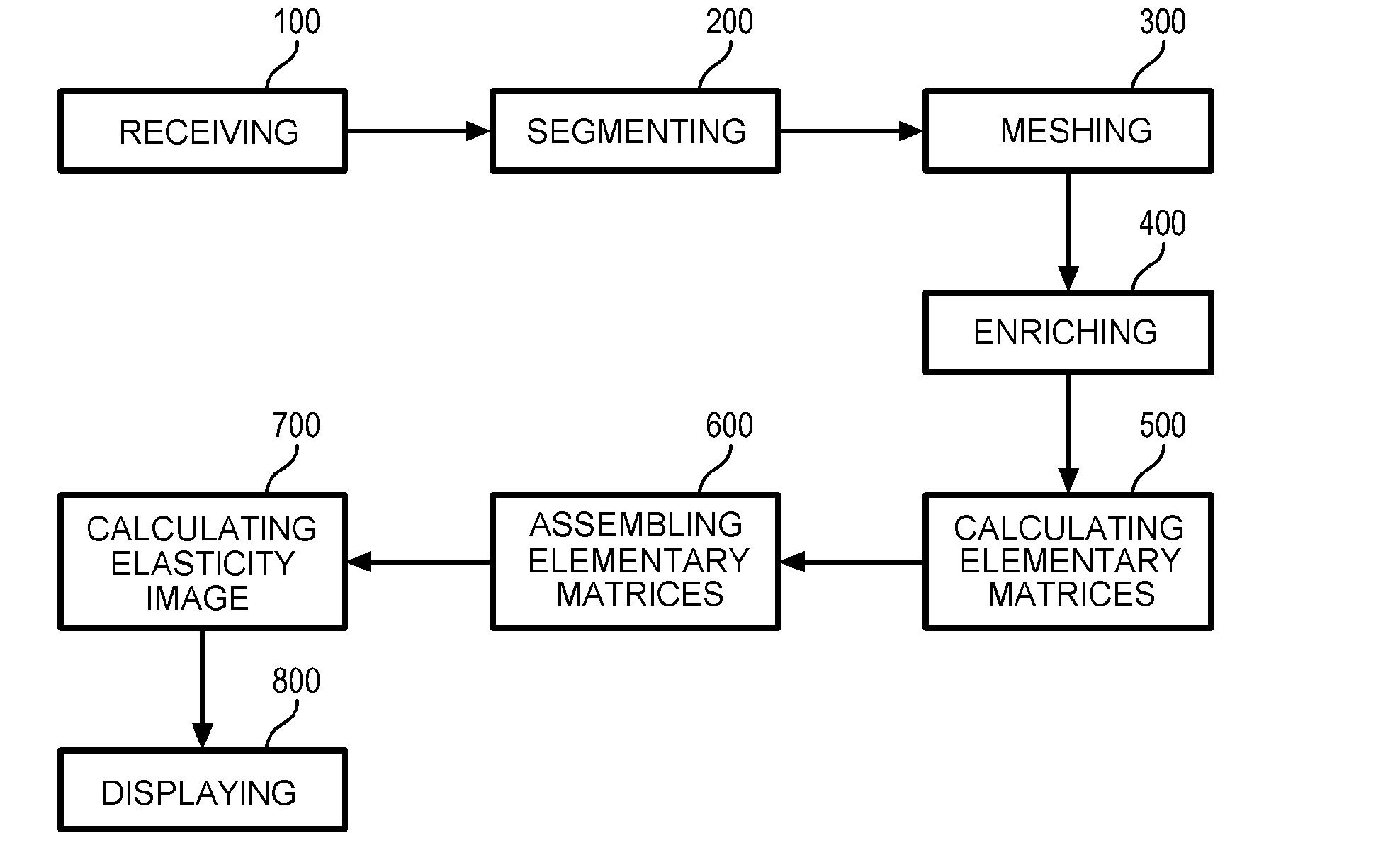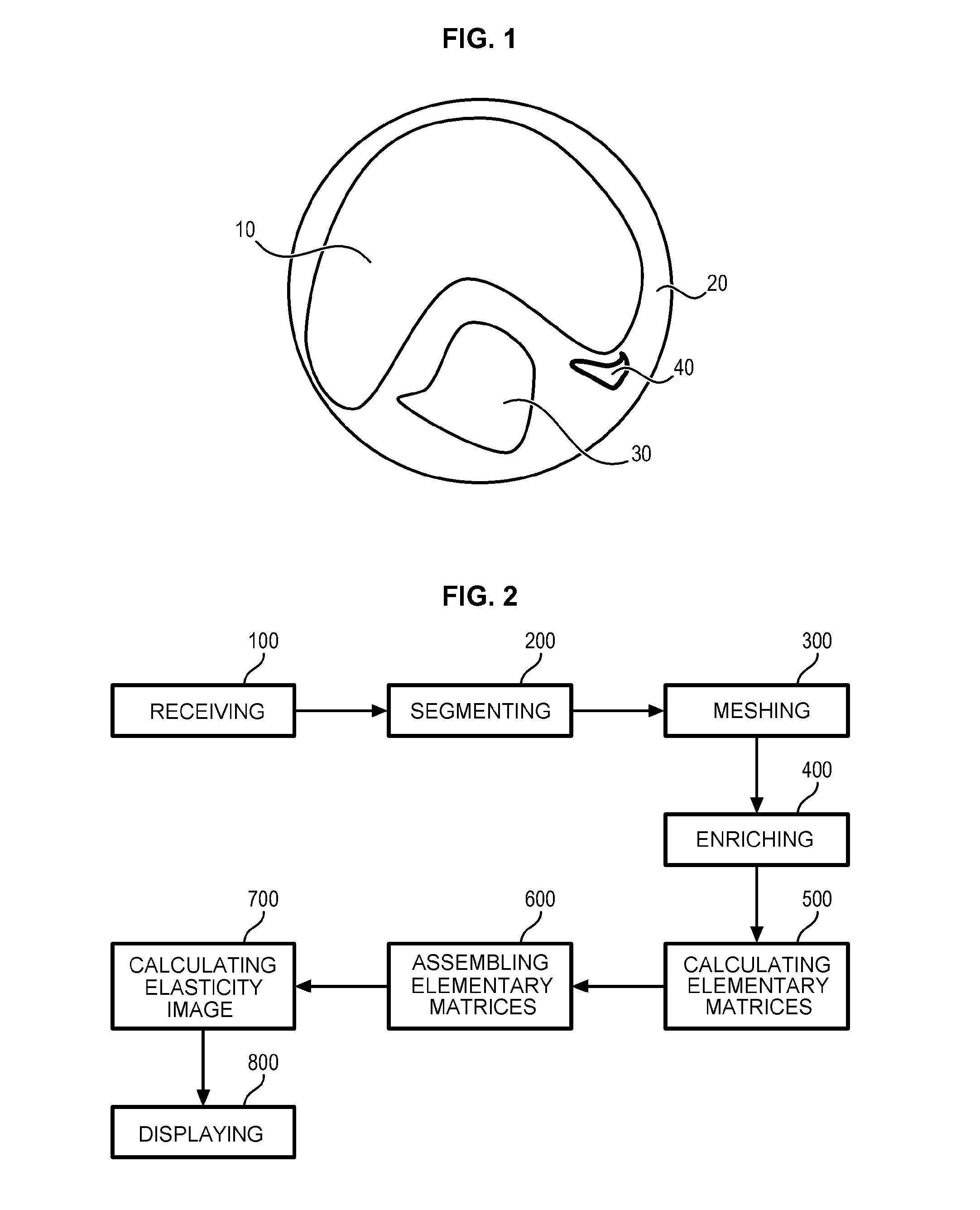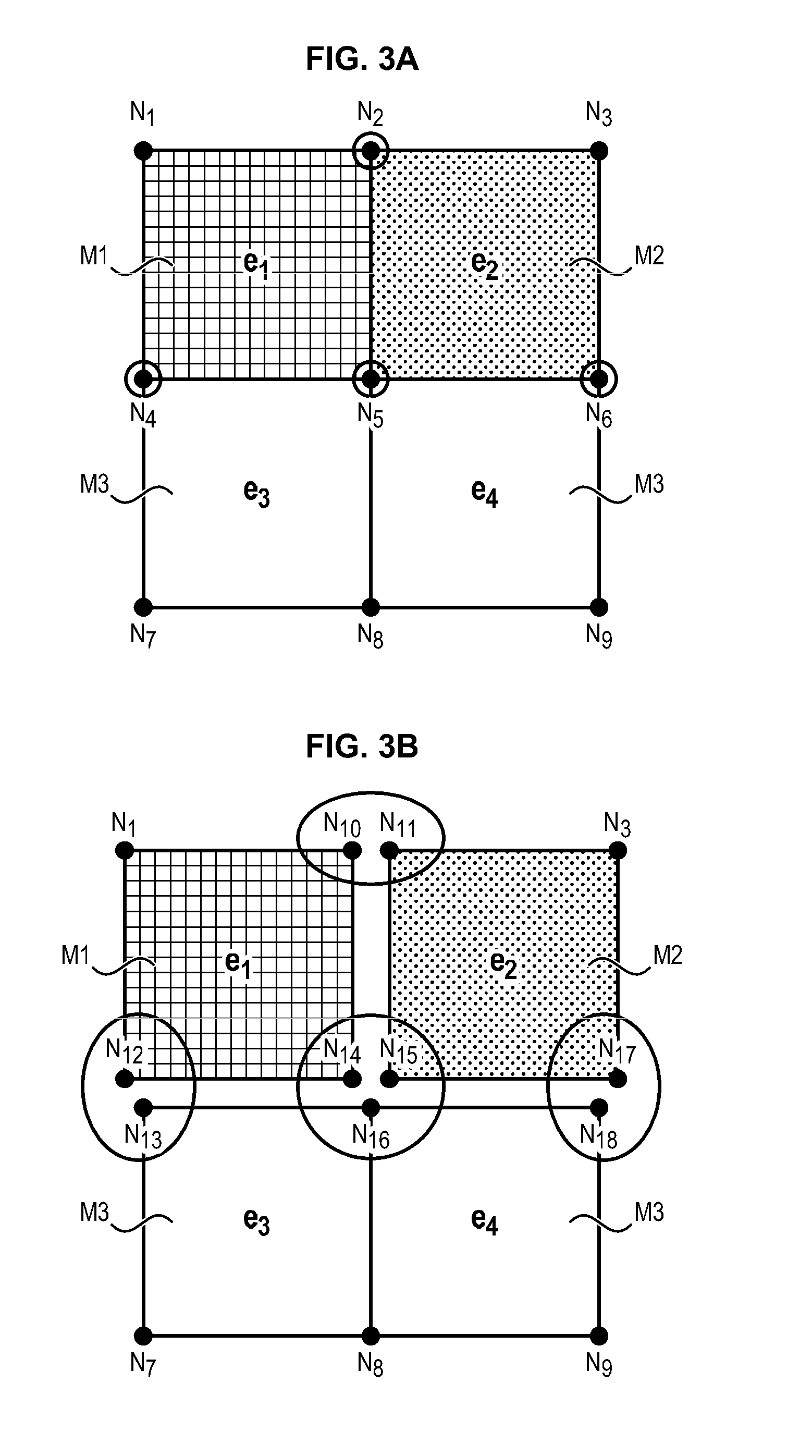Image processing method based on the finite element method for directly solving inverse problems in structural mechanics
a structural mechanics and finite element technology, applied in the field of image processing for solving linear elasticity inverse problems, can solve the problems of not giving the possibility of considering material discontinuities, method has a very long computation time, and spatial shape functions used do not allow characterization of heterogeneous atheromatous plaques
- Summary
- Abstract
- Description
- Claims
- Application Information
AI Technical Summary
Benefits of technology
Problems solved by technology
Method used
Image
Examples
Embodiment Construction
1. Introduction
[0067]As indicated in the prior art presentation part, Oberai et al. proposed a reconstruction method by finite elements for solving an inverse problem in structural mechanics. This method—which allows reconstruction of an image representing the different elasticities of a body—is original in that not only the force and the displacements are considered as nodal variables, but also the Young modulus and the Poisson coefficient (or which amounts to the same both Lamé coefficients). However, a drawback of this method relates to the use of continuous spatial shape functions. This does not give the possibility of characterizing the bodies having high discontinuities of the materials.
[0068]Moreover, as this reconstruction method is iterative, it does not allow reconstruction of an image representing the different elasticities of a body in real time. The present invention was therefore developed for allowing a reconstruction in real time of an image representing the differen...
PUM
 Login to View More
Login to View More Abstract
Description
Claims
Application Information
 Login to View More
Login to View More - R&D
- Intellectual Property
- Life Sciences
- Materials
- Tech Scout
- Unparalleled Data Quality
- Higher Quality Content
- 60% Fewer Hallucinations
Browse by: Latest US Patents, China's latest patents, Technical Efficacy Thesaurus, Application Domain, Technology Topic, Popular Technical Reports.
© 2025 PatSnap. All rights reserved.Legal|Privacy policy|Modern Slavery Act Transparency Statement|Sitemap|About US| Contact US: help@patsnap.com



